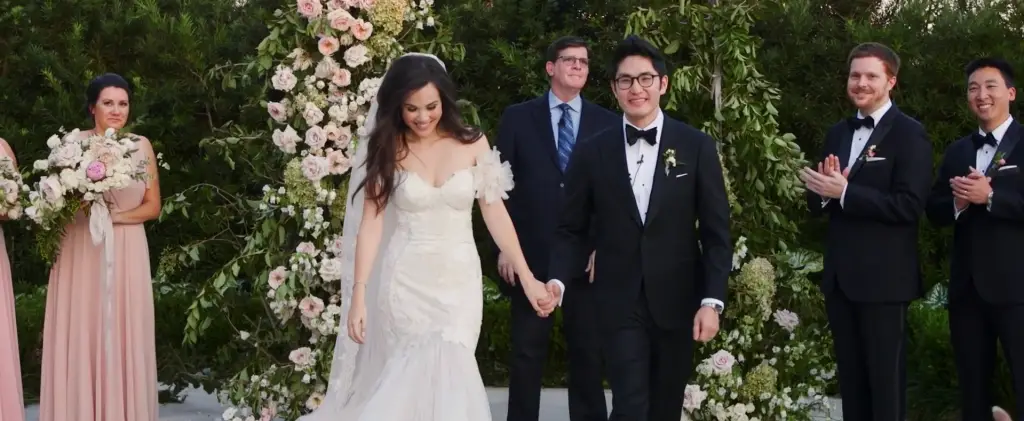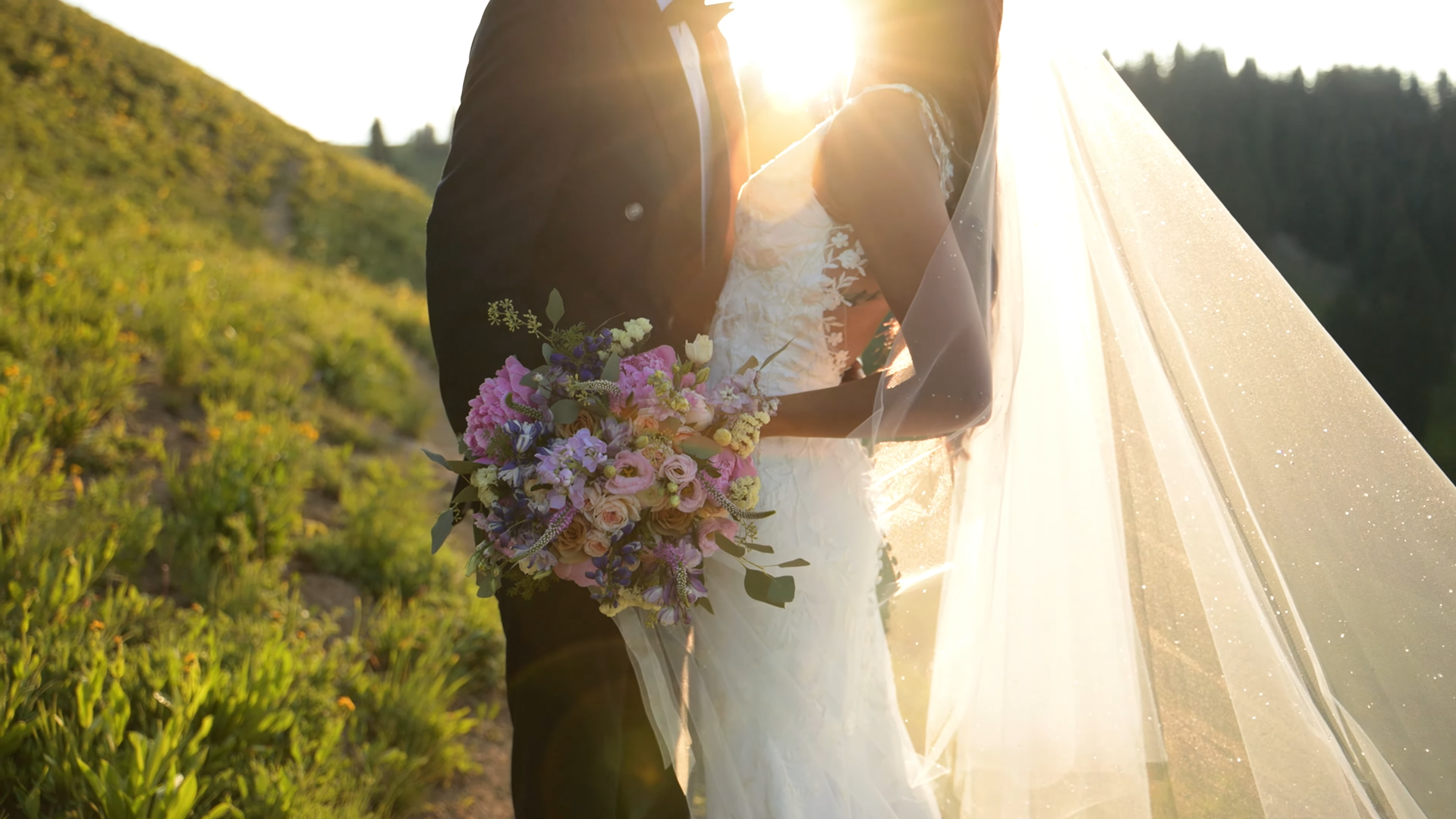Why Green Matters
The average U.S. wedding can generate around 60 metric tons of CO₂, once you add up travel, food, fashion, and décor. That is nearly three times a typical household’s annual footprint, so even small improvements make a measurable climate difference.
Choose a Low‑Impact Venue First
Location drives almost every other environmental choice. A site close to the majority of guests cuts airline emissions, while venues that already supply rentals, lighting, and sound eliminate dozens of deliveries.
Look for independent certifications—many eco‑lodges carry EarthCheck or LEED credentials—and ask whether the space runs on renewable energy or purchases green power.

If you love the outdoors, remember that a botanical garden or national‑park amphitheater often comes with built‑in scenery, meaning fewer flowers and props need to be shipped in.
Rethink Catering With Regenerative Food
Food is typically the single largest emissions line. Partner with chefs who source local, seasonal produce and who divert food scraps to compost or animal feed.
Non‑profit collective Zero Foodprint works with caterers worldwide to funnel a small percentage of every invoice into regenerative‑agriculture grants, effectively turning your menu into a mini‑carbon‑sequestration project.
Plant‑forward menus—think heirloom‑grain risotto with roasted vegetables or spice‑rubbed cauliflower “steaks”—use a fraction of the carbon of imported beef or lamb.
When animal protein is non‑negotiable, choose poultry or line‑caught fish from certified sustainable fisheries and keep portions modest to avoid waste.
Flowers and Décor That Live On
Fresh stems are beautiful, but conventionally grown roses may have logged more air miles than some guests.
Ask florists to prioritize growers listed by Certified American Grown or their local equivalent, and to condition arrangements in reusable vessels instead of single‑use floral foam.
After the reception, donate arrangements to hospitals or retirement homes, or invite guests to take centerpieces home in thrift‑store vases.
For décor, rent instead of buy—vintage candlesticks, velvet lounge furniture, and reclaimed‑wood farm tables all add character without generating new manufacturing emissions.
Low‑Footprint Fashion
The greenest outfit is one that already exists. Rental platforms such as Rent the Runway let brides, grooms, and guests circulate designer pieces instead of purchasing garments that may be worn once.
Megan’s reception gown, Oprah’s dress AND Amal’s dress were all made from sustainable textiles by @StellaMcCartney. love love love. 🌍#RoyalWedding pic.twitter.com/UerFQ9tkWs
— Sam Fazz (@SamFazz) May 19, 2018
For those set on owning their gown, labels like Reformation publish life‑cycle data on water, energy, and waste savings for each dress and use Bluesign‑certified silks and recycled lace.
Consider preloved fine jewelry, vintage heirlooms, or lab‑grown diamonds to avoid the heavy mining footprint of new stones. Tailoring a family suit or adding detachable sleeves to a classic slip dress can modernize existing pieces while preserving sentimentality.
Go Paperless—and Plant What You Print
Digital stationery has matured far beyond a plain email. Platforms such as Paperless Post and Greenvelope now mimic hand‑lettered calligraphy, track RSVPs automatically, and integrate maps and hotel blocks.
If you still adore tactile paper, choose 100 percent post‑consumer recycled stock printed with vegetable inks, or try seeded paper that guests can later plant to sprout wildflowers.
Smarter Transportation Logistics
Even the greenest venue loses points if everyone drives solo. Offer a shuttle from a central hotel, encourage train travel where feasible, and create a wedding‑website section that pairs guests so they can rideshare.
When the bridegroom did not come on horseback or in a car but on an electric Bike & the bride exchanged Tulsi garlands.Fascinating story of an Indian couple showing the way towards eco friendly frugal Indian weddings.Kudos Aditya & Madhuri 👍🌹Trailblazershttps://t.co/iJAamfQuN5 pic.twitter.com/5a6NxDxXqa
— Supriya Sahu IAS (@supriyasahuias) April 1, 2021
For destination celebrations, schedule events close together so visitors can stay car‑free once they arrive. Offsetting unavoidable flights is not a silver bullet, but it closes the gap after all practical reductions.
Measure, Reduce, Offset
Seeing the numbers can motivate action. Free tools such as the Mindfully Wed carbon footprint calculator and the Sustainable Wedding Alliance calculator break emissions down by category, helping couples decide where to focus—maybe it is swapping imported peonies for farmer‑market dahlias or replacing favors with a charity donation.
Once reductions are in place, offset the remainder through high‑quality, third‑party‑verified projects (look for Gold Standard or Cool Effect).
Some couples add a checkbox on the RSVP asking guests to contribute a small amount toward the offset instead of buying physical gifts; others simply build it into the budget as a cost of doing business with the planet.
Give Experiences, Not Trinkets
Traditional swag bags often end up in hotel trash cans. Replace them with experiential “thank‑yous”: a morning yoga class, a guided nature walk, or a coffee tasting with a local roaster.
Our Pine Grove Porch is perfect for breakfast, your wedding ceremony, a dinner party, concert, or even to hold a morning yoga session! This versatile space can do it all. pic.twitter.com/gPO2h0n0nl
— Race Brook Lodge (@RaceBrookLodge) May 31, 2023
If you love sending guests home with something tangible, choose edible treats packaged in compostable materials—think beeswax‑wrapped artisan cheese or fair‑trade chocolate bars—or donate to an environmental nonprofit in honor of each attendee.
The Bigger Picture
An eco‑minded wedding is not about perfection; it is about aligning a milestone celebration with the values you plan to share in marriage.
When relatives see refillable water stations instead of plastic bottles, or when they ride a bus fueled by biodiesel, they receive a hopeful message that joyful traditions and responsible stewardship can coexist.
Small choices—multiplied across thousands of ceremonies every year—have the power to shift entire supply chains toward sustainability.
By planning consciously now, you create not just beautiful memories but also a healthier planet for those future anniversaries.

